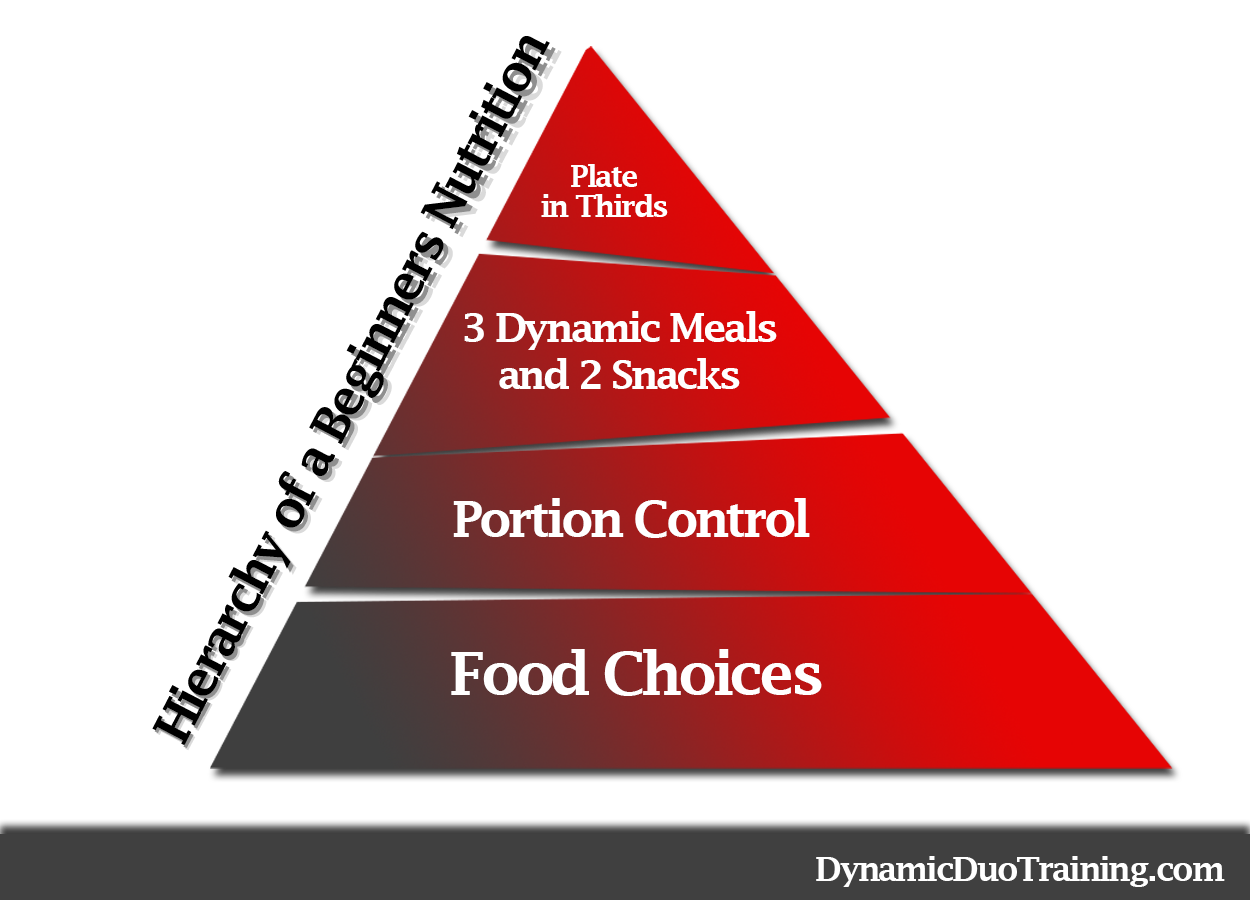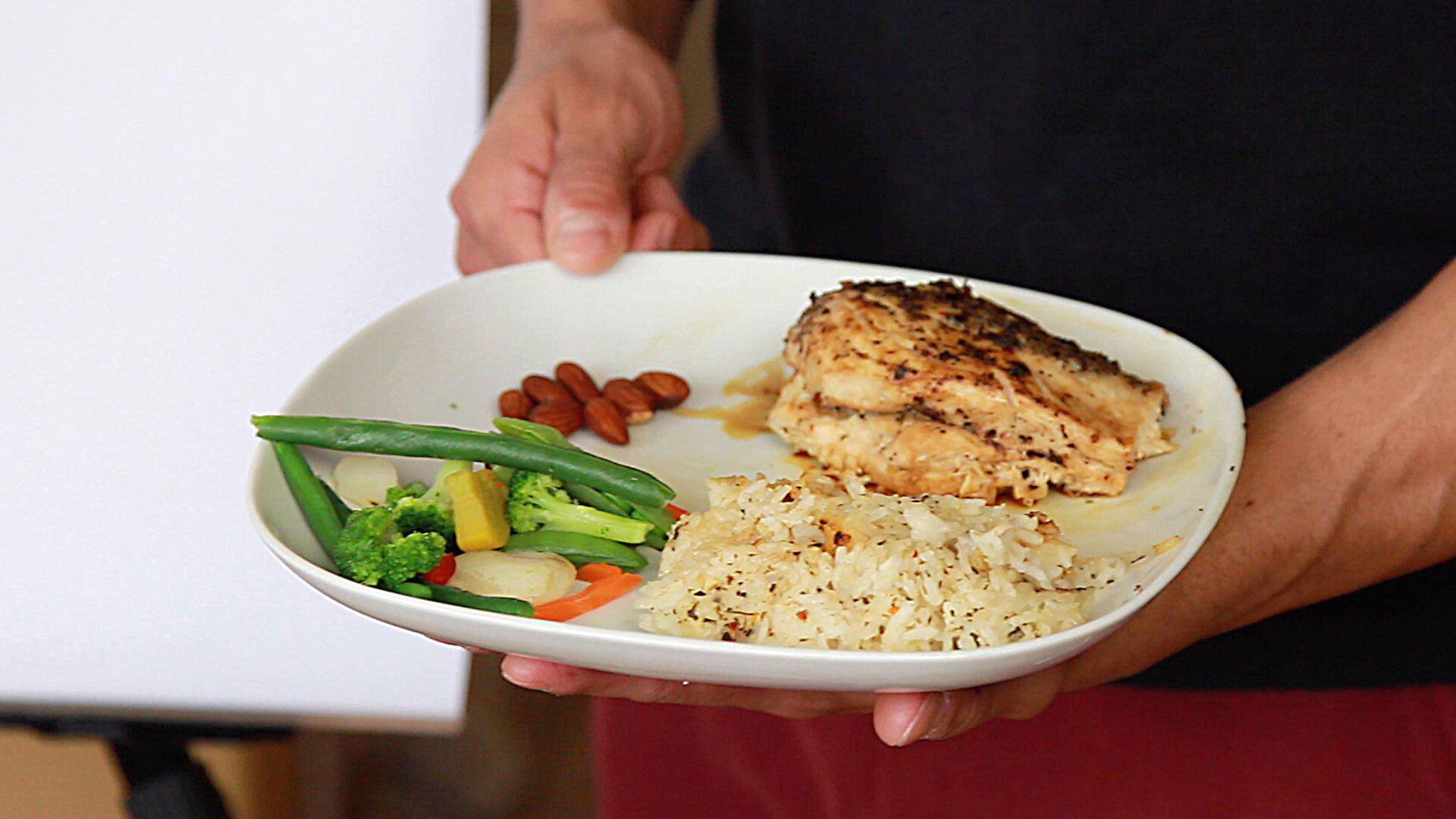Hopefully Part 1 on Building Good Habits really laid down the foundation for this 3 part series on “Laying Down the Bricks to Building a Dynamic Fitness Program.”
Now that we move into part 2, we want to discuss the hierarchy of beginner’s nutrition and what’s most important.
Before we delve into this, just keep in mind that consistency and adherence will always be at the forefront for nutrition or an exercise program.
If you can’t see yourself doing this nutrition or exercise program for months and years, then you need to re-evaluate the components of the program to see what’s working and what’s not and fine tune it until you increase your adherence and consistency.
Now that we have that down…are you ready to learn the hierarchy of beginner’s nutrition?
Bust out those pens and papers, save the pyramid image below, and let’s dig in.

Plate of Thirds Rule
We want you to close your eyes and picture you have a squeaky clean-white dinner plate in front of you.
Now we want you to divide that plate into thirds, now that you have your plate in thirds, we want you to have a high quality protein source covering a third of the plate, and protein sources can be:
- Chicken
- Fish
- Eggs
- Beef
- Dairy
Then the next third of the plate should consist of a complex carbohydrate source, and complex carbohydrate sources can consist of:
- Brown or white rice
- Oats
- Whole wheat or Whole grain breads
- Potatoes (however botanically classified as vegetables)
- Beans
And lastly we want a healthy fat source covering that final third of the plate, and healthy fat sources can consist of:
- Nuts/Seeds
- Almond/Peanut butter
- Olive oil/Coconut oil
- Animal fats (egg yolks, red meat, fatty fish)
- Avocados
An example of your plate could look like:
- A grilled chicken breast
- Sticky white rice
- Steamed vegetables with a side of roasted almonds

Each of your meals should comprise of a high quality protein source, complex carbohydrate source, and a healthy fat source.
3 Dynamic Meals and 2 Snacks
Next up on the hierarchy of nutrition we have 3 Dynamic Meals and 2 snacks. When we say “Dynamic Meals” what we mean are larger-core meals and a good way to look at this is your typical breakfast, lunch, and dinner meals. When you have these larger-core meals, you generally want to spread them out about 4-6 hours apart. An example of this would look like:
Dynamic Meal 1: 8 a.m
Dynamic Meal 2: 1 p.m
Dynamic Meal 3: 6 p.m
Moving on to incorporating 2 snacks, we like to advocate more of a higher protein type kind of snack. The reason being if you have your 3 Dynamic Meals, the average person will usually consume approximately 20-40g of protein at each meal. Which if you consume the latter part of that at each meal (approx. 40g) your coming very close to the recommended dietary allowance (RDA) of protein intake which is 0.8g/lb. (1).
But what if we threw in some more protein? A study by Antonio and colleagues showed more protein intake has the following benefits (2):
- Increased satiety (feeling more full)
- Increased TEF (Thermic Effect of Food; your body works harder to break protein down and thus expends more calories)
- More muscle retention
- Increased activity energy expenditure and NEAT (non-exercise activity thermogenesis) from the extra 400 calories of protein overfeeding may have led to the fat loss in the high protein group simply due to the cost of converting more protein to carbs to fuel exercise aka gluconeogenesis and because the body just really works that much harder to break down protein and thus more calories are burned
This is where adding in 2 higher protein snacks can be beneficial, options such as:
- Greek yogurt
- Whey protein shakes
- Beef jerky
- Turkey slices
So if you add 2 snacks in-between your 3 Dynamic Meals it would look like this:
An example of this would look like:
Dynamic Meal 1: 8 a.m
Snack 1: 11 a.m
Dynamic Meal 2: 1 p.m
Snack 2: 4 p.m
Dynamic Meal 3: 6 p.m
In a 24 hour period, you should try and aim for 3 Dynamic meals and 2 higher protein source snacks.
Portion Control
Before we get to the third tier, do us a favor and pat yourself on the back because that means you’re moving along down the pyramid within your nutrition.
Now that you have a sense of what your plate should look like (plate in thirds), how many meals you should have (3 dynamic meals and 2 snacks), we want to teach you how to portion out your serving sizes within this plate that’s divided into thirds. This rule is called the “Precision Nutrition Control” rule. (3)
For women, the portion of protein at primary meals should be the size of the palm of your open hand. For men, we recommend two palm sized portions with each meal.
For women, the portion of carbohydrates at primary meals should be 1 cupped hand sized. For men, we recommend 2 cupped hand sized portions.
For women, we recommend 1 thumb sized portion of extra fats. For men, we recommend 2 thumb sized portions of extra fats. If the portion sizes are slightly bigger than your thumb, don’t stress over it.
It’s important to keep in mind that these are just general rules and recommendations. If you are looking to gain muscle mass, your portions may want to be a bit bigger and vice versa if you are dieting, portion sizes may be smaller.
Another great way to keep yourself accountable for your portion sizes and making sure you’re including protein, carbs, and fats into your meals is to take photos of your meals and analyze them.
Make a folder in your computer with the dates and label them Monday through Friday, each day you will take pics of your meals, save them, review them at the end of the day, and then try improving upon them the following day.
As long as you’re portioning your meals out with the above recommendations or taking pictures of your meals, you will be doing just fine within your nutrition program.
Food Choices
Alright…3 tiers down on the pyramid and there’s one left to go over that’s just as important as the others and that’s food selection.
People decide what to eat, when to eat, how much to eat, and whether to eat in highly personal ways based on a complex interaction of genetic, behavioral, or social factors rather than an awareness of nutrition’s importance to health (4).
As you might expect, the number one reason most people choose certain foods is taste, they like the flavor. Other reasons people select certain foods are:
- Out of habit like eating cereal every morning for breakfast
- Cultural reasons
- Social interactions
- Availability, convenience, and economy
Food choices are huge within a nutrition program because there are foods that are considered “higher energy density” which consist of (5):
- Higher calorie foods
- Processed and highly palatable foods (more sugar, carbs and fats)
- Overall less nutrient value for the body
On the other hand, your nutrition program should predominantly consist of whole and minimally refined foods which consist of (5):
- Lower calorie foods
- Higher quality protein, fruits, vegetables, healthy fats, and complex carbohydrates
- Overall more nutrient value for the body
When you’re putting together your plate in thirds and 3 dynamic meals and 2 snacks, the majority of your food choices should be of whole and minimally refined foods that’s going to provide a lot of nutrient density to your body (see healthy food choice examples above under “plate in thirds” discussion”).
Our new physical paperback book “The New Era of Fitness” is finally out! We are pretty much giving it away “FREE” and giving away a “FEW BONUSES” along with it. Get it HERE
References:
- Institute of medicine. Dietary reference intakes for energy, carbohydrates, fiber, fat, protein and amino acids. 2005
- Antonio et al. A high protein diet (3.4g/kg/d) combined with a heavy resistance training program improves body composition in healthy trained men and women. 2015
- Precision Nutrition. http://www.precisionnutrition.com/
- A Cohen. Use of the internet for health information. 2009
- Whitney E, Rolfes S. Understanding Nutrition. 13th 2013


